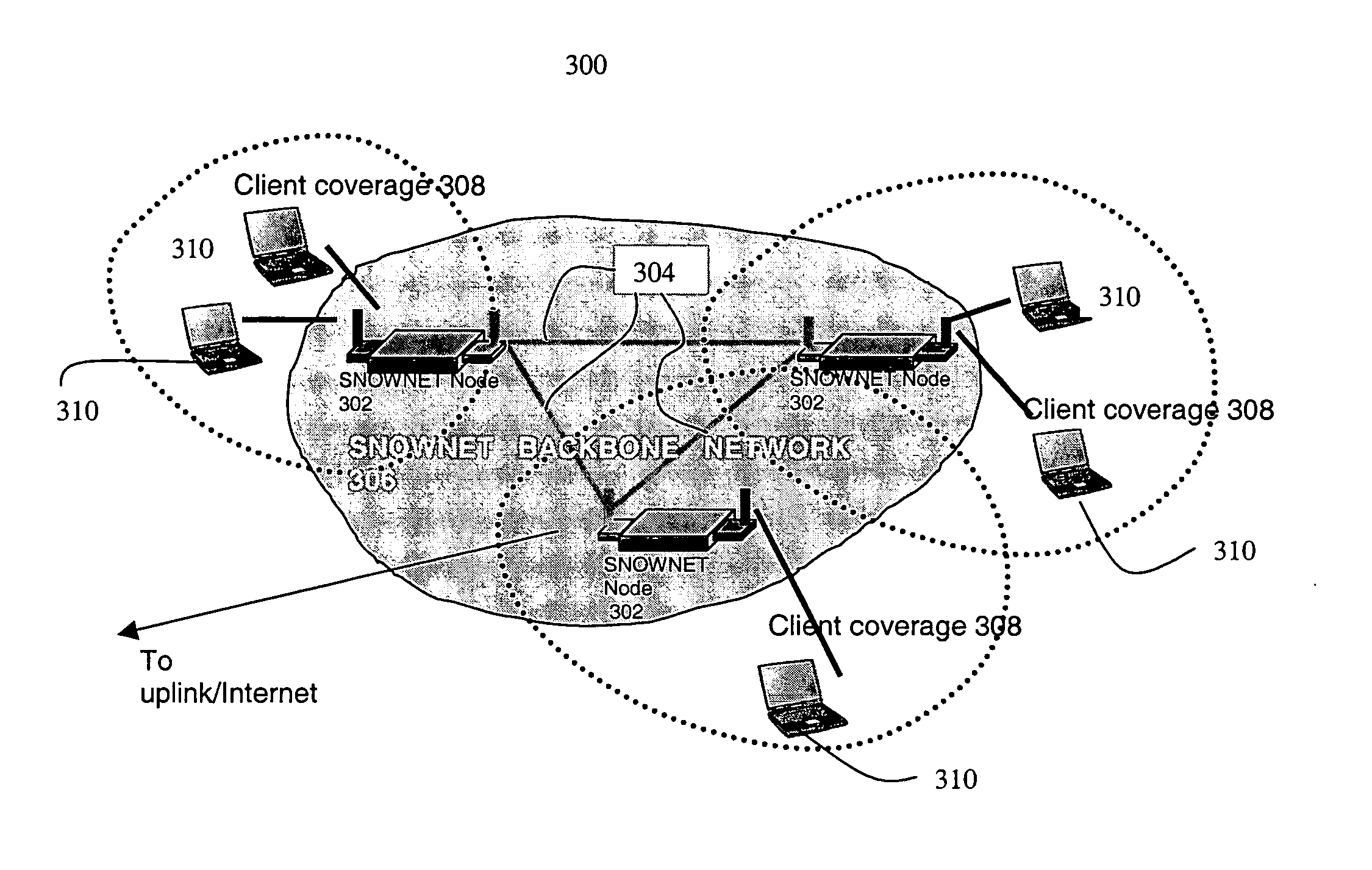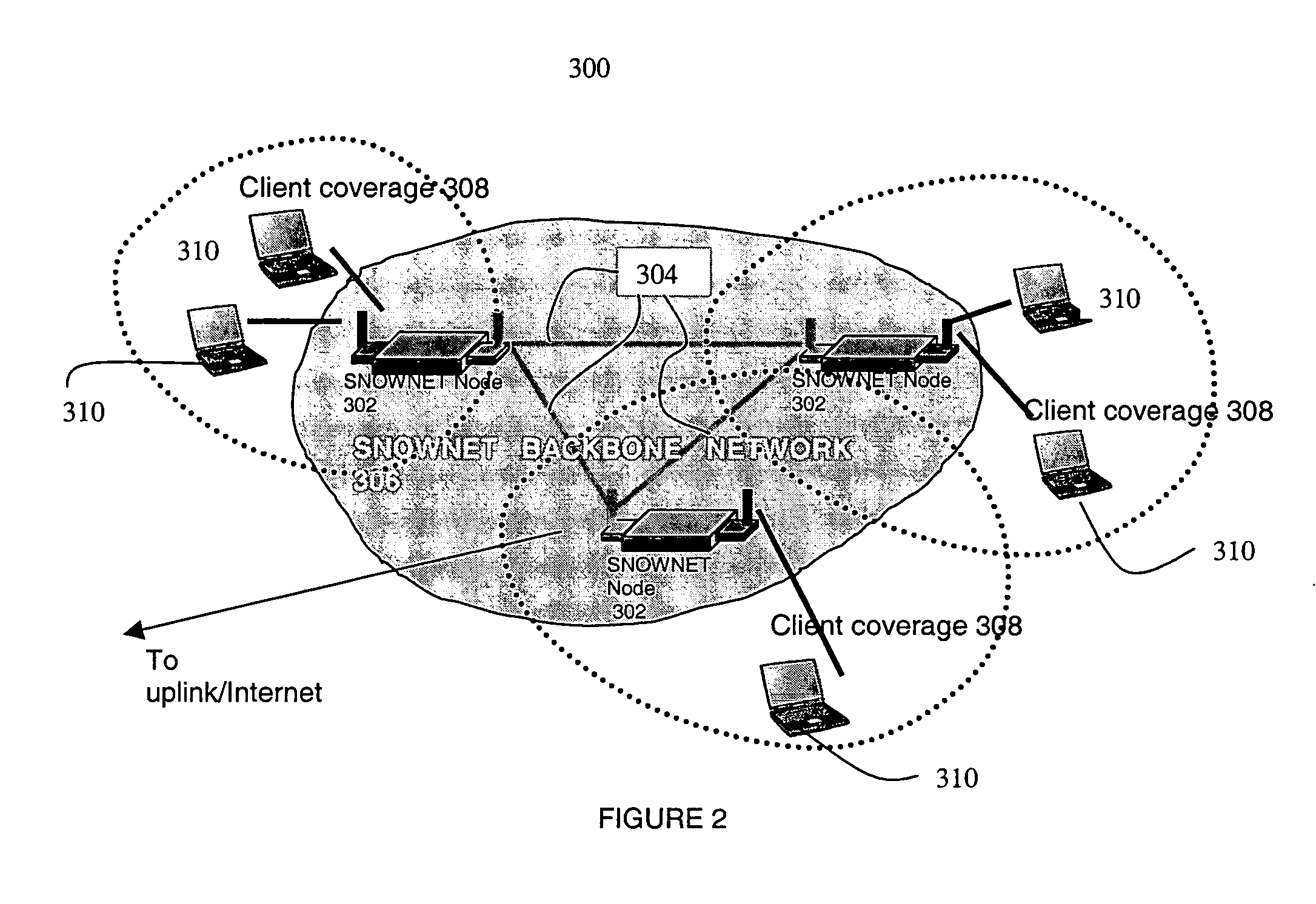Apparatus, method, and medium for self-organizing multi-hop wireless access networks
- Summary
- Abstract
- Description
- Claims
- Application Information
AI Technical Summary
Benefits of technology
Problems solved by technology
Method used
Image
Examples
Embodiment Construction
[0052] The authentication method of the present invention is applicable to wireless networks in general, and, more particularly, to the Secure Nomadic Wireless Network (SNOWNET) disclosed in U.S. Provisional Patent Application No. 60 / 507,934, U.S. patent application Ser. No. 10 / 463,857, and U.S. Provisional Application No. 60 / 428,700, the contents of all of which are incorporated herein by reference.
[0053] Although the authentication method of the present invention is disclosed with reference to SNOWNET, the authentication method of the present invention is not limited to such implementation.
[0054] A brief overview of SNOWNET is now presented, with disclosure of the application of the present invention to SNOWNET following.
[0055] The Secure Nomadic Wireless Network (SNOWNET) is a wireless access network technology that is portable, rapidly deployable, and secure. SNOWNET combines a wireless multi-hop backbone network with infrastructure-mode IEEE 802.11 network access services. S...
PUM
 Login to View More
Login to View More Abstract
Description
Claims
Application Information
 Login to View More
Login to View More - R&D
- Intellectual Property
- Life Sciences
- Materials
- Tech Scout
- Unparalleled Data Quality
- Higher Quality Content
- 60% Fewer Hallucinations
Browse by: Latest US Patents, China's latest patents, Technical Efficacy Thesaurus, Application Domain, Technology Topic, Popular Technical Reports.
© 2025 PatSnap. All rights reserved.Legal|Privacy policy|Modern Slavery Act Transparency Statement|Sitemap|About US| Contact US: help@patsnap.com



